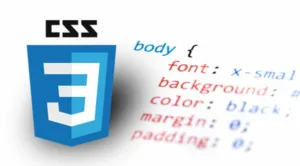I inherited a project with material ui, which I have never used before. I have the following in my code
<FormControl fullWidth>
<InputLabel
className={className}
htmlFor={id}
error={error}
>
{label}
</InputLabel>
<Input
className={className}
id={id}
value={value}
onChange={(e) => {
onChange(e.target.value)
}}
/>
</FormControl>
This works everywhere, the label shrinks and the styles are applied properly.
When I inspect the code, I see the underline is styled using :before and :after pseudo classes
I need to apply the same to an Autocomplete, that is using google places to autocomplete locations. The library I am using is react-google-autocomplete if this matters
I have tried (among a trillion other things)
const {ref} = usePlacesWidget({
apiKey: process.env.REACT_APP_API_KEY,
onPlaceSelected: (place) => {
console.log(place);
},
});
return (
<FormControl fullWidth>
<InputLabel
className={className}
htmlFor={id}
error={error}
>
{label}
</InputLabel>
<Autocomplete
ref={ref}
id={id}
className={className}
placeholder=""
renderInput={(params) => (
<Input
{...params}
InputProps={{
...params.InputProps,
className: {className}
}}
/>
)}
/>
</FormControl>
);
The label is styled but does not shrink. I even tried adding
InputLabelProps={{
shrink: true,
...props.InputLabelProps,
}}
to no avail.
The text field has the styles applied in size and its text content (font) – there are no pseudo classes ever, and it is outlined with the default outline style.
I would like to know how to replicate the look of the rest of the text fields as in the first code snippet in the question using the className that has been passed. Thank you very much
On the other hand, doing
const {ref} = usePlacesWidget({
apiKey: process.env.REACT_APP_API_KEY,
onPlaceSelected: (place) => {
console.log(place);
},
});
return (
<FormControl fullWidth>
<InputLabel
className={className}
htmlFor={id}
error={error}
>
{label}
</InputLabel>
<Input
ref={ref}
id={id}
className={className}
/>
</FormControl>
);
the component does get styled but the search does not even get performed (I think this is expected but it would be nice to get this working somehow)

 Question posted in
Question posted in 

2
Answers
Hard to say without a provided code sandbox, but reading the docs the issue might be with not forwarding refs to the custom input component:
https://mui.com/material-ui/react-autocomplete/#custom-input
They always use
TextFieldin their examples.And
react-google-autocompletedocs have no examples using it the way you are trying to https://github.com/ErrorPro/react-google-autocomplete/blob/HEAD/docs/examples.js, as far as I can tell.I wouldn’t say this is the best solution, and I haven’t tested this with a working API key since I don’t have one. To my understanding, you can use
slotsandslotsPropsto the<Input>MUI component and pass the<Autocomplete>component there, so that the default<input>slot is replaced with the<Autocomplete>component, like so:Only doing that, however, causes some issue which is that the default input styles aren’t applied to the
<Autocomplete>, so a hacky way to tackle this is to copy the className from the default<input>that were given by the MUI<Input>component, like so:Below is the minimum full code:
As I said above, I haven’t tested this with a real API key, so before using this, you might want to test it with a real API key which I assume you have already.